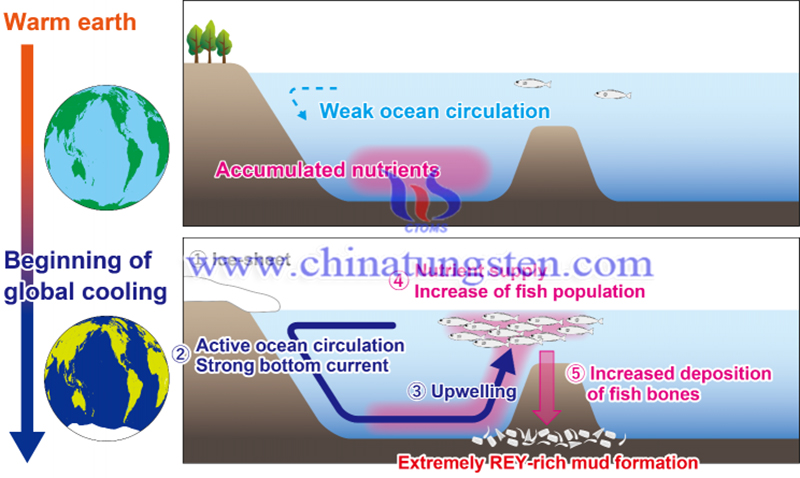Fossilized Fish May Indicate Rare Earth Metal Deposits
- Details
- Category: Tungsten's News
- Published on Wednesday, 24 June 2020 20:15
Rare earth metals are essential for the green industry, and the ancient global climate change and certain types of seabed geology have driven fish populations to specific locations, as remains in the fossilized fish accumulated valuable elements and these fossil beds became concentrated deposits of such metals. The discovery could aid prospects for deposits of so-called rare-earth elements in other undersea locations.
Key components such as wind turbines, LEDs, and rechargeable batteries rely heavily on a group of metals called rare earth elements and yttrium (REY). Currently, the world's supply of these metals comes mainly from Chinese mines. However, a large deposit near the island of the Japanese island will soon be able to meet the growing demand. But how did the REY deposit get there, and why that location is the subject of much interest.

Assistant Professor Junichiro Ohta said: "That story begins back in time in the Eocene epoch 34.5 million years ago, about halfway between now and the time of the dinosaurs. At that time, several things happened that led to the REY deposit. Firstly, vast amounts of nutrients accumulated in the deep ocean. Secondly, the planet underwent cooling which altered sea currents, stirring up these nutrient sedimentations. The seamounts then caused upwellings of nutrients delivering them to the fish, which thrived as a result."
Surprisingly, these fossilized fish or fossil remains near Minamitorishima, constitute the REY deposit. As the fish died and underwent fossilization, the REY metals in the environment will accumulate inside the fossils. The research team had previously made this fish-to-REY deposit connection, but how and when the fossil deposits formed was an open question until now.
Ohta said: "I'm pleased we made this discovery by looking at fragments of bones and teeth. It was a difficult but satisfying task dating the sedimentation by comparing fossils we uncovered against a database of fossils with known ages. Equally so was another way we dated the deposits, by measuring the ratio of osmium isotopes in seawater trapped in REY-rich mud and comparing those to established records."
Ironically, the story of fish as a useful resource for renewable energy technology parallels to that of the ancient organisms that became oil, which led to the very problems renewable technologies now aim to solve.
Ohta said: "Based on this new theory for the genesis of REY deposits in the fossilized fish and ocean, we can improve the way we find future sedimentation. We can aim at the feet of large seamounts on the seabed, many of which are distributed from the western North Pacific Ocean to the Central Pacific Ocean, so are in theory accessible to Japan."
Minamitorishima's rare earth source can sufficiently satisfy the current global needs for hundreds of years. However, getting to them may be extremely difficult as the deposit is just over 5 kilometers below sea level, and at present no resource has ever been commercially mined from such a depth. Additional or alternative sources may be useful, so improved search methods will be a huge benefit.
- Rare Earth Manufacturer & Supplier, Chinatungsten Online: www.chinatungsten.com
- Tungsten News & Prices of China Tungsten Industry Association: www.ctia.com.cn
- Molybdenum News & Price: news.molybdenum.com.cn
- Tel.: 86 592 5129696; Fax: 86 592 5129797; Email: sales@chinatungsten.com



 sales@chinatungsten.com
sales@chinatungsten.com